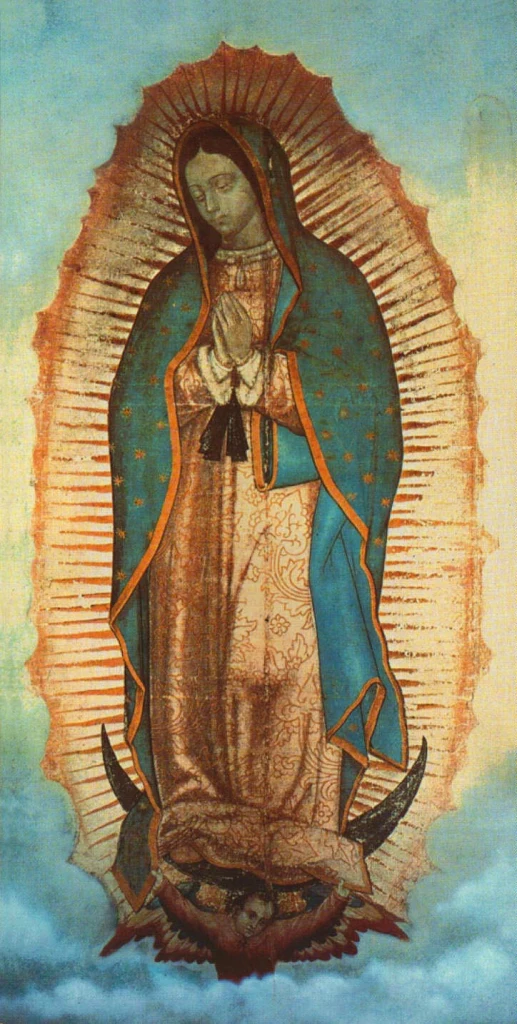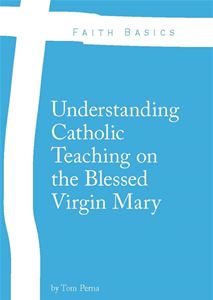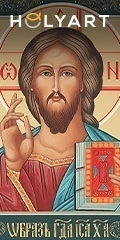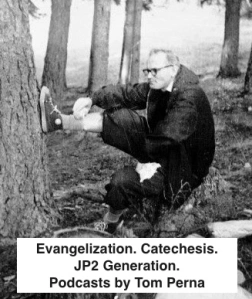After my students and I finish each new theology chapter, I like to take them to the school chapel for prayer. I think it’s important to pray with our students since theology is both heart and mind or understood philosophically, faith and reason. The greatest Doctors of the Church, those saints who had a great impact on the theology of the Church, had great prayer lives and probably would tell us that prayer and having a personal relationship with Jesus Christ and his Church is just as important, if not more important, than studying the faith academically.
As great a saint and theologian that St. Thomas Aquinas was, his prayer was fundamental for his studies. I have a book in my personal library with the many prayers written by the great Angelic Doctor of the Church. Simply, prayer is our conversation with God. Once the students are finished with each academic chapter, going to the chapel and praying with them, I believe, is fundamental to their overall understanding and relationship with Christ and his Church.
Being that May is the Month of Mary, I decided today (and tomorrow) to take my sophomores and juniors to the school chapel to pray the greatest Marian prayer – The Holy Rosary. Since this is my first Mondays with Mary (the LATE LATE EDITION), I will briefly explain the Rosary. If Mondays with Mary continues after May, I will focus a good amount on the prayer that St. Pio of Pietrelcina called, “the greatest weapon against Satan.”
The Holy Rosary is one of the most popular lay devotions among Roman Catholics worldwide (and even some Protestants have begun to take up this devotion). Its formal name is the “Most Holy Rosary of the Blessed Virgin Mary.” Most Church historians also call it the Dominican Rosary, the Marian Rosary, and the Vita Christi (Life of Christ Rosary) to set it apart from other Roman Catholic bead-prayers such as the Chaplet of Divine Mercy.
 St. Dominic de Guzmán (1170-1221 A.D.) is closely associated with the Holy Rosary. He is the founder of the Order of Preachers also known as the Dominicans. The Dominicans have been the major promoters of the Holy Rosary since the time of St. Dominic. If you ever see a Dominican priest or religious sister, look at what is around their waist – you shall see the Holy Rosary. Historically and through strong contemporary academics, the Rosary, in its basic form, can be traced back to the Apostolic Church. The mysteries that focused on the Marian devotion were visualized through cycles in the early Jerusalem and Palestinian churches. The cycles were the pre-cursor for the Joyful, Sorrowful, and Glorious Mysteries.
St. Dominic de Guzmán (1170-1221 A.D.) is closely associated with the Holy Rosary. He is the founder of the Order of Preachers also known as the Dominicans. The Dominicans have been the major promoters of the Holy Rosary since the time of St. Dominic. If you ever see a Dominican priest or religious sister, look at what is around their waist – you shall see the Holy Rosary. Historically and through strong contemporary academics, the Rosary, in its basic form, can be traced back to the Apostolic Church. The mysteries that focused on the Marian devotion were visualized through cycles in the early Jerusalem and Palestinian churches. The cycles were the pre-cursor for the Joyful, Sorrowful, and Glorious Mysteries.
As the devotion of the Holy Rosary made its way through Europe, it reached the lay faithful of the Church through voluntary confraternities. At one point, there were many versions (close to 200) of the Holy Rosary that competed for attention, but St. Pope Pius VI (a Dominican) settled the matter in 1569. In that year, the Holy Father wrote an Apostolic Letter that set the Rosary at 15 mysteries – it was now the official Church version that could be prayed by the entire Church. In the year 2002, Blessed John Paul II published the Apostolic Letter, Rosarium Virginis Mariae, that added five new mysteries known as the Luminous Mysteries to the original 15 totaling 20 mysteries. Blessed John Paul II often said that the Holy Rosary was his favorite prayer. 
A Simple Explanation on how to pray the Holy Rosary:
- We first make the Sign of the Cross.
- We begin with the Apostles Creed on the cross or crucifix.
- An Our Father (“The Lord’s Prayer) is said on the first bead after the cross/crucifix.
- On the three beads following the single bead, we pray the Hail Mary three times asking for an increase in the Theological Virtues of Faith, Hope, and Charity (in my family growing up, these beads for were for the [New York] Yankees, Giants, and Rangers).
- After the three Hail Mary’s, we pray the Doxology or Glory Be and the Fatima Prayer (O my Jesus…)
- After those prayers are said, we then follow with an Our Father, 10 Hail Mary’s, A Glory Be and the Fatima prayer. We repeat each of those steps announcing the mysteries of the Rosary 5 times making our way around the rosary beads.
- Once we complete the five mysteries, we then pray the Hail Holy Queen.
- After the Hail Holy Queen, we can pray the optional prayer from the Roman Missal.
- We can also include the St. Michael the Archangel Prayer to help us fight against Satan and ask for the intercession of the Blessed Mother under her different titles – Our Lady of Fatima, Our Lady of Lourdes, Our Lady of China, Our Lady of Guadalupe, etc.
- We then end the Rosary as we began it with the Sign of the Cross.
The Rosary is fundamental to our lives as Christians for the prayer is Christ-centered. The Rosary focuses on the Gospel message whose center is Jesus Christ himself who came to redeem all of humanity. Personally, I love praying the Rosary. During this past Lent, I prayed a daily rosary! It would bring such peace and strength during those days of struggle and temptation. Once you begin to give your heart to Our Lady a.k.a. Our Mother, she will always look after you and care for you, just like a good Mom does.
Lastly, let us not forget what some of great saints and Popes of the Church have said about this prayer:
“The rosary is the scourge of the devil.” – Pope Adrian VI
“The rosary is a treasure of graces.” – Pope Paul V
“The rosary is the most powerful weapon to touch the Heart of Jesus, Our Redeemer, who so loves His Mother.” – St. Louis Marie Grignon de Montfort
“How beautiful is the family that recites the Rosary every evening.” – Blessed John Paul II
Categories: Mariology










Hey Tommy!
I absolutely love this! What a wonderfully comprehensive blog on for the Catholic faith. I look forward to reading more of your posts. God Bless.
Yankees, Giants and Rangers! 🙂 I can picture our Blessed Mother endearingly smiling over such profound devotion. 🙂